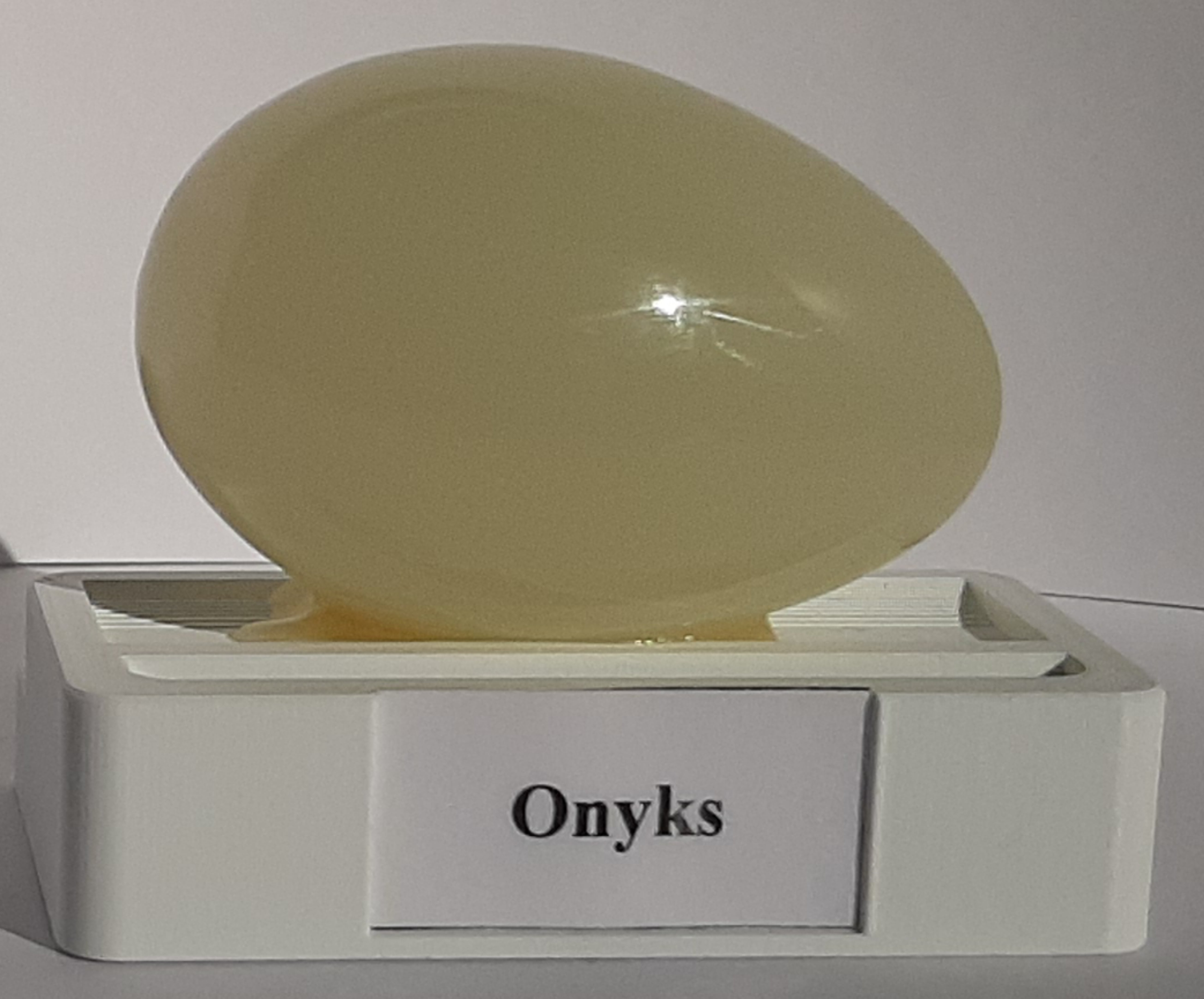
Onyx
oxides
2.65 to 2.67 g/cm3
trigonal
bad
SiO2
white and black with different variations
7 on the Mohs scale
glassy, silky
Natural onyxes are rare rocks; they are formed in gas voids in volcanic rocks, artificial onyx is often obtained, produced on the basis of agates; onyx is a precious mineral and is found in various regions of the world, including Greece, Uruguay, Argentina, Australia, Brazil, Canada, China, Germany, Pakistan, India, Madagascar, Latin America, the United Kingdom and the United States; this mineral is unlikely to be found in Poland
Onyx, i.e. silicon oxide (IV) belonging to the group of oxides, is characterized by very regular crystals, the structure of the crystals themselves is characterized by parallel white and black layers, which may also appear in other similar colours; characterized by glassy and silky gloss, poor cleavage and lack of fracture; it is used primarily as a decorative stone for the production of all kinds of sculptures and decorations, it is an excellent material for inlays, it is also widely used in jewellery for the production of high-quality accessories
The name of onyx comes from the Greek word όνυξ, which means "claw", referring to its high hardness (as much as 7 on the Mohs scale); onyx is of great historical importance and was already known, for example, in ancient China, where it was reserved exclusively for Chinese emperors, under penalty of death; has a feature called birefringence (the ability to refract transmitted light twice); it has been associated with strength for centuries (in ancient Rome, images of the god Mars were carved from it); black and white layers of onyx are most common, usually with a black base layer and a white layer on top, it is commonly called "Arabian onyx" or "real" onyx; onyx that is black at the base but with a very thin layer of white is called "Nicolo onyx"; this variety has such a thin layer of white that it appears blue against the black base; onyx, which has yellow, red, or brownish layers, is commonly called "sardonyx" and was quite common in European and Middle Eastern cultures; it has been used since ancient times; some say that Cleopatra wore onyx jewellery in ancient Egypt to protect her and warn her of upcoming dangers; sardonyx was discovered in excavations at Knossos as part of Minoan art in Crete; Pliny the Elder used onyx as one of his natural healing treatments, making it well known in ancient Greece and ancient Rome


